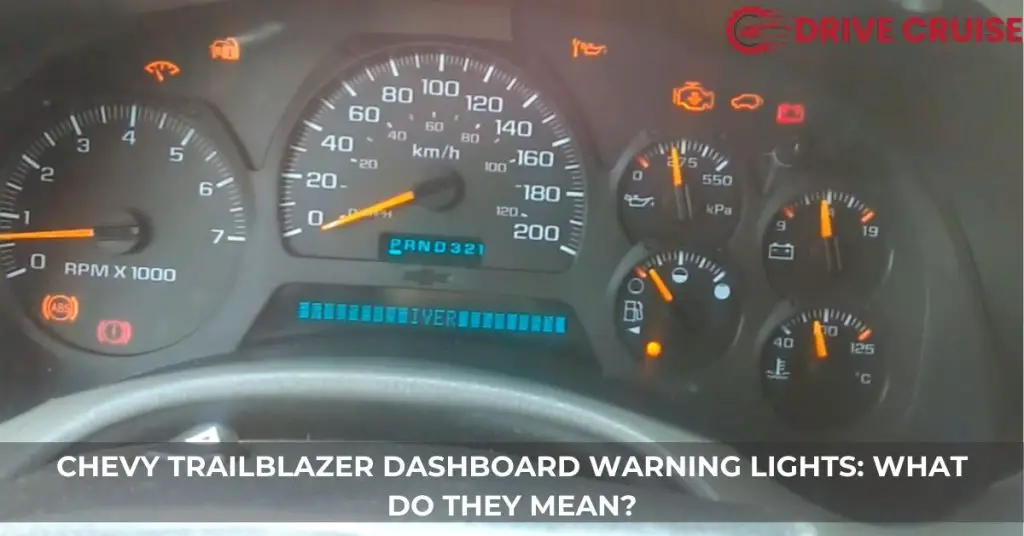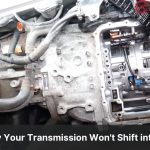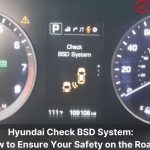When we’re cruising down the road in our Chevy Trailblazer, the last thing we want to see is a dashboard warning light flickering to life. It’s like the car’s way of saying, “Hey, we need to talk.” But instead of panicking, it’s crucial to understand what these lights mean. They’re not just there to give us a scare; they’re actually designed to keep us safe and informed about the health of our vehicle.
So, let’s dive into the world of Chevy Trailblazer dashboard warning lights together. We’ll explore what these symbols signify and how we can respond to them effectively. Whether it’s a gentle reminder for maintenance or a critical alert for immediate action, knowing these signs can make all the difference in keeping our ride smooth and secure. Join us as we decode the language of our Trailblazer’s dashboard, turning those mysterious icons into helpful guides on our journey.
Understanding Chevy Trailblazer Dashboard Warning Lights
Decoding the myriad of dashboard warning lights in a Chevy Trailblazer is vital for maintaining the vehicle’s health and ensuring on-road safety. Each symbol or light on the dashboard represents a different area of the vehicle, from engine functions to the braking system and oil pressure. Let’s delve into several key warning lights typically found on the dashboard of a Chevy Trailblazer, understanding what they indicate and how to act upon them.
- Engine Warning Light: This light resembles an engine and lights up in yellow or orange. It signifies a potential issue with the vehicle’s engine or a related component. If this light comes on, it’s advisable to have the vehicle checked by a professional mechanic as soon as possible to avoid further damage.
- Oil Pressure Warning Light: Displayed as an oil can icon, this light indicates that the vehicle’s oil pressure is low. Low oil pressure can lead to significant engine damage. Therefore, if this light illuminates, one should turn off the engine and check the oil level, adding more if necessary, before driving any further.
- Brake System Warning Light: This warning, symbolized by an exclamation mark in a circle or the word “BRAKE”, highlights an issue with the brake system. This could mean that the brake fluid level is low or there’s a problem with the anti-lock brake system (ABS). It’s crucial to address brake warning lights immediately to ensure optimal stopping power and safety.
- Battery Charge Warning Light: When the battery symbol lights up, it indicates a problem with the vehicle’s charging system. It doesn’t necessarily mean the battery needs to be replaced, but rather that the system that charges the battery while driving isn’t functioning correctly. Checking the electrical system and the condition of the battery is recommended when this light appears.
By understanding these and other dashboard warning lights in a Chevy Trailblazer, drivers can take prompt, informed action. Whether it’s scheduling regular maintenance or addressing urgent issues, recognizing what these symbols mean aids in keeping the vehicle running smoothly and safely.
Common Chevy Trailblazer Dashboard Warning Lights and Their Meanings
Building on our discussion about the significance of dashboard warning lights in a Chevy Trailblazer, let’s delve deeper into the common warning lights and their meanings. Understanding these will help you keep your vehicle in top-notch condition and ensure safety while driving.
Engine Warning Light
Also known as the Check Engine Light, this warning signifies various potential issues ranging from a loose gas cap to more serious engine problems. If it illuminates, we recommend scheduling a diagnostic check to pinpoint and resolve the issue.
Oil Pressure Warning Light
This light indicates a drop in the engine’s oil pressure, which is crucial for lubricating your Trailblazer’s engine components. Seeing this light, it’s vital to stop the vehicle and check the oil level. Adding oil might solve the problem, but if the light stays on, it’s time to seek professional help.
Brake System Warning Light
This light warns of a potential issue within the braking system. It could mean the brake fluid is low or there are more severe problems with the brake components. Ensuring your brakes are functioning properly is vital for safety, so don’t ignore this light.
Battery Charge Warning Light
When this light comes on, it indicates a charging system failure. The cause could be a failing alternator, a problem with the battery, or an electrical system issue. Because your Trailblazer’s battery powers all its electrical components, addressing any issues promptly is crucial to avoid getting stranded.
Tire Pressure Monitoring System (TPMS) Light
This icon lights up when there’s a significant deviation from the recommended tire pressure. Correct tire pressure ensures optimal performance and fuel efficiency, so check your tires and adjust the pressure accordingly if you see this light.
By paying close attention to these dashboard warning lights, we can address problems early, maintain our Chevy Trailblazers’ health, and guarantee our safety on the road.
What to Do When a Warning Light Comes On
After understanding the significance of the Chevy Trailblazer’s dashboard warning lights, it’s crucial to know how to react when any light illuminates. Here, we’ll dive into the immediate steps you should take to ensure your vehicle remains in top condition and your safety on the road isn’t compromised. Our focus revolves around general guidelines, relevant for any warning light scenario you might encounter.
- Check the Manual: First, consult your Chevy Trailblazer’s owner’s manual. Every vehicle has its quirks, and the manual provides precise information about what each specific warning light means and the recommended course of action.
- Evaluate Urgency: Some warning lights, like the Tire Pressure Monitoring System (TPMS) Light, might indicate something that can be resolved relatively easily, such as inflating your tires. Others, like the Engine Warning Light, demand immediate attention. If a light comes on and you’re unsure about its severity, it’s better to err on the side of caution.
- Safe Stop: If the warning light suggests a serious issue, or if the vehicle feels abnormal (weird noises, smells, or driving behavior), pull over as soon as it’s safe. Continuing to drive might exacerbate the problem.
- Contact Professional Help: For most warning lights, especially those indicating severe problems like engine or brake system issues, contacting a professional mechanic or your dealership’s service department is the best follow-up. They can provide specific advice or arrange for an inspection and necessary repairs.
- Use Emergency Services if Needed: In cases where the vehicle is not safe to drive and you’re unable to reach a service point on your own, don’t hesitate to use roadside assistance services offered through your insurance, the vehicle’s warranty, or a third-party provider.
By adhering to these steps, you’ll not only tackle Chevy Trailblazer dashboard warning lights effectively but also maintain your vehicle’s longevity and ensure your safety and that of your passengers. Remember, timely action can prevent minor issues from turning into costly repairs.
Preventative Measures and Regular Maintenance
Taking preventative measures and performing regular maintenance are vital steps in ensuring the longevity and reliability of a Chevy Trailblazer. By focusing on these areas, we can prevent many dashboard warning lights from ever illuminating. Let’s delve into effective strategies to keep our Trailblazers in optimal condition.
Adhere to a Regular Service Schedule
Following the manufacturer’s recommended service schedule helps identify and resolve potential issues before they become serious. Services such as oil changes, brake checks, and tire rotations are essential at predetermined intervals. For a Chevy Trailblazer, consulting the owner’s manual provides specific guidance on these intervals, ensuring that the vehicle receives the attention it needs when it needs it.
Monitor Fluid Levels
Keeping an eye on fluid levels, including engine oil, coolant, brake fluid, and power steering fluid, is crucial. Low levels can lead to various problems, indicated by different dashboard warning lights. We recommend checking these levels monthly and before long trips to avoid unexpected issues.
Pay Attention to Tire Maintenance
Tire pressure and condition directly affect a vehicle’s safety and fuel efficiency. Regularly checking tire pressure, including the spare, aligns with the Tire Pressure Monitoring System (TPMS) Light guidelines, ensuring tires are inflated to the manufacturer’s recommended levels. Additionally, watch for signs of wear or damage, and have tires rotated according to the schedule provided in the owner’s manual.
Regular Battery Checks
The Battery Charge Warning Light is one we never want to see unexpectedly. Regular battery checks, especially as the battery nears the end of its expected life span, can preclude surprises. Most batteries have a life expectancy of three to five years. Checking the battery for corrosion and ensuring it holds a charge can save us from potential starting issues.
By incorporating these preventative measures and focusing on regular maintenance, we can significantly reduce the chances of dashboard warning lights illuminating and ensure that our Chevy Trailblazers remain reliable companions on the road. Keeping up with these tasks also minimizes the risk of minor issues developing into major repairs, safeguarding our safety and potentially saving us money in the long run.
Professional Help vs. DIY for Dashboard Light Issues
When addressing dashboard light issues in your Chevy Trailblazer, deciding between seeking professional help and taking a DIY approach depends on the complexity of the problem and your level of expertise. Let’s break down scenarios where each option makes the most sense.
Professional Help
Turning to professionals is advisable under the following conditions:
- Complex Warning Lights: If the Check Engine Light or Electrical Fault Light comes on, it often indicates a complicated issue that requires specialized diagnostic tools and skills. Mechanics have the necessary equipment to accurately diagnose and fix these problems.
- Safety-Related Lights: Warning lights related to the braking system or airbags should not be taken lightly. These are crucial safety features, and any issues should be addressed by a professional to ensure your vehicle is safe to drive.
- Repeated Issues: If a warning light reappears after you’ve attempted a fix, it’s time to hand it over to the professionals. Reoccurring issues might suggest a deeper problem that only a skilled technician can resolve.
DIY Approach
Handling dashboard light issues yourself is an option when:
- Simple Fixes: If the Tire Pressure Monitoring System (TPMS) Light turns on, it might just mean your tires need air. Simple maintenance tasks like this can be easily handled at home.
- Informational Lights: Some lights, such as the Maintenance Required Light, serve as reminders for routine services like oil changes. If you’re comfortable performing these tasks, you can reset these lights once the service is complete.
- Cost-Savings: Opting for a DIY route can save money on labor costs. For vehicle enthusiasts with a good understanding of their Trailblazer’s operating system, resolving minor issues on your own can be both rewarding and economical.
Whether opting for professional help or taking a DIY approach to dashboard light issues in your Chevy Trailblazer, understanding the severity and implications of each warning light is crucial. While some problems can be resolved with minimal effort and knowledge, others demand the expertise of a skilled mechanic. Assess the situation carefully, keeping your vehicle’s safety and reliability in mind before deciding on the best course of action.
Conclusion
We’ve walked through the essential dashboard warning lights in a Chevy Trailblazer and how crucial it is to not just recognize them but understand what they signify. Whether it’s opting for professional help or tackling the issue with a DIY spirit, the key is to ensure your vehicle’s safety and performance aren’t compromised. Remember, being informed about what these lights mean can save you time and money while keeping you safe on the road. So let’s stay alert, informed, and ready to act whenever our Trailblazer speaks to us through its dashboard. After all, a well-maintained vehicle is the cornerstone of a worry-free driving experience.
Related Posts:







